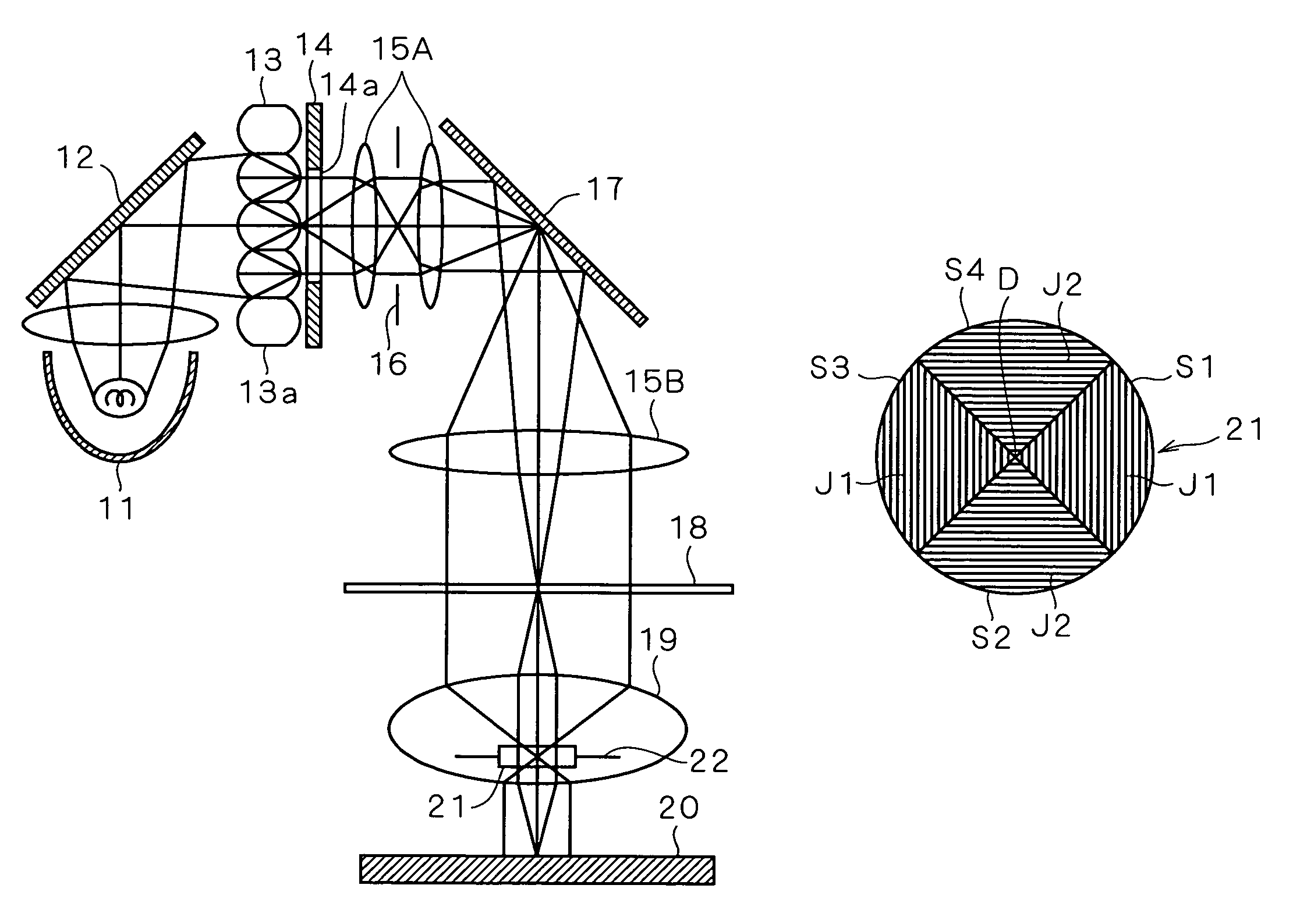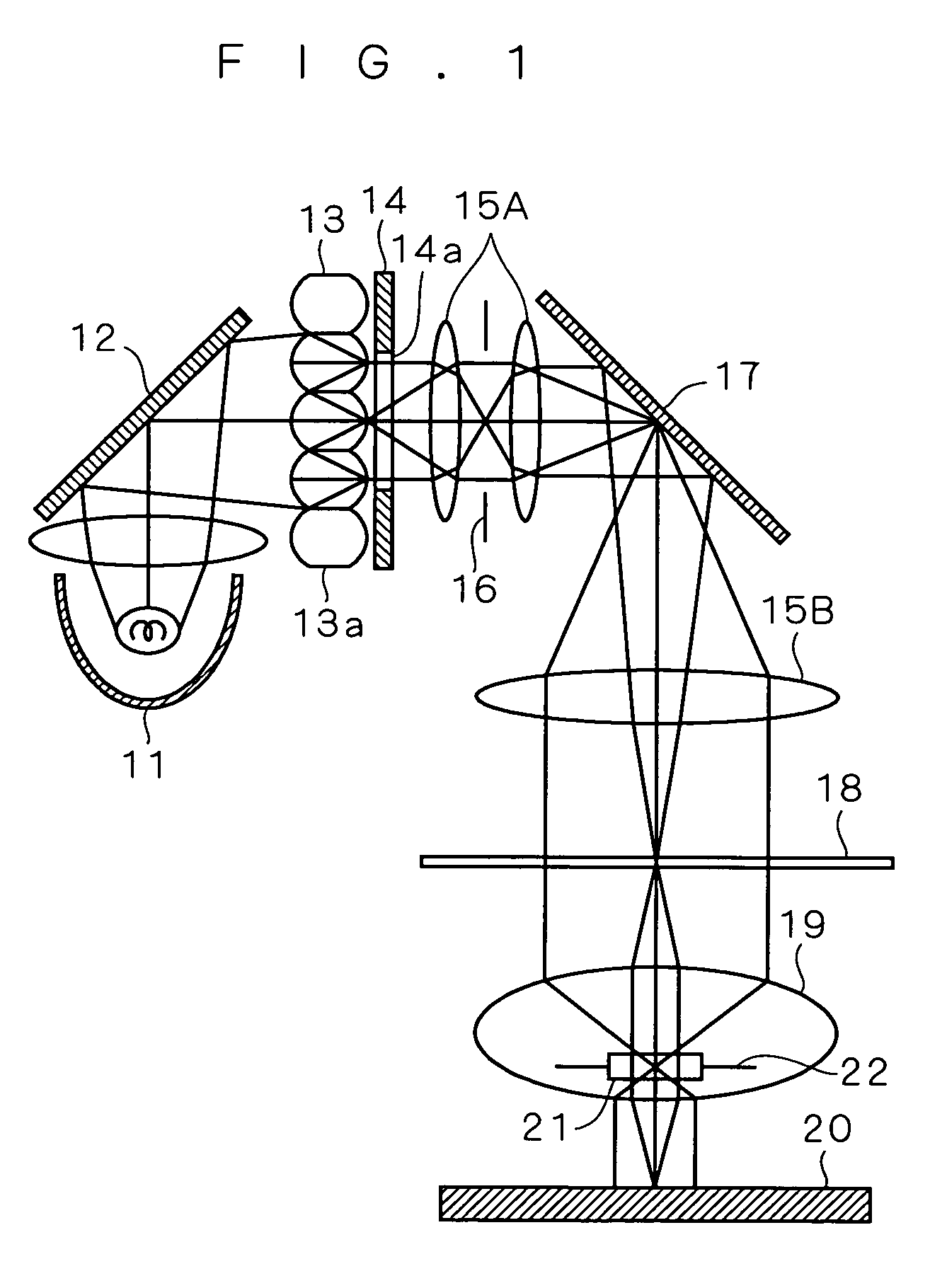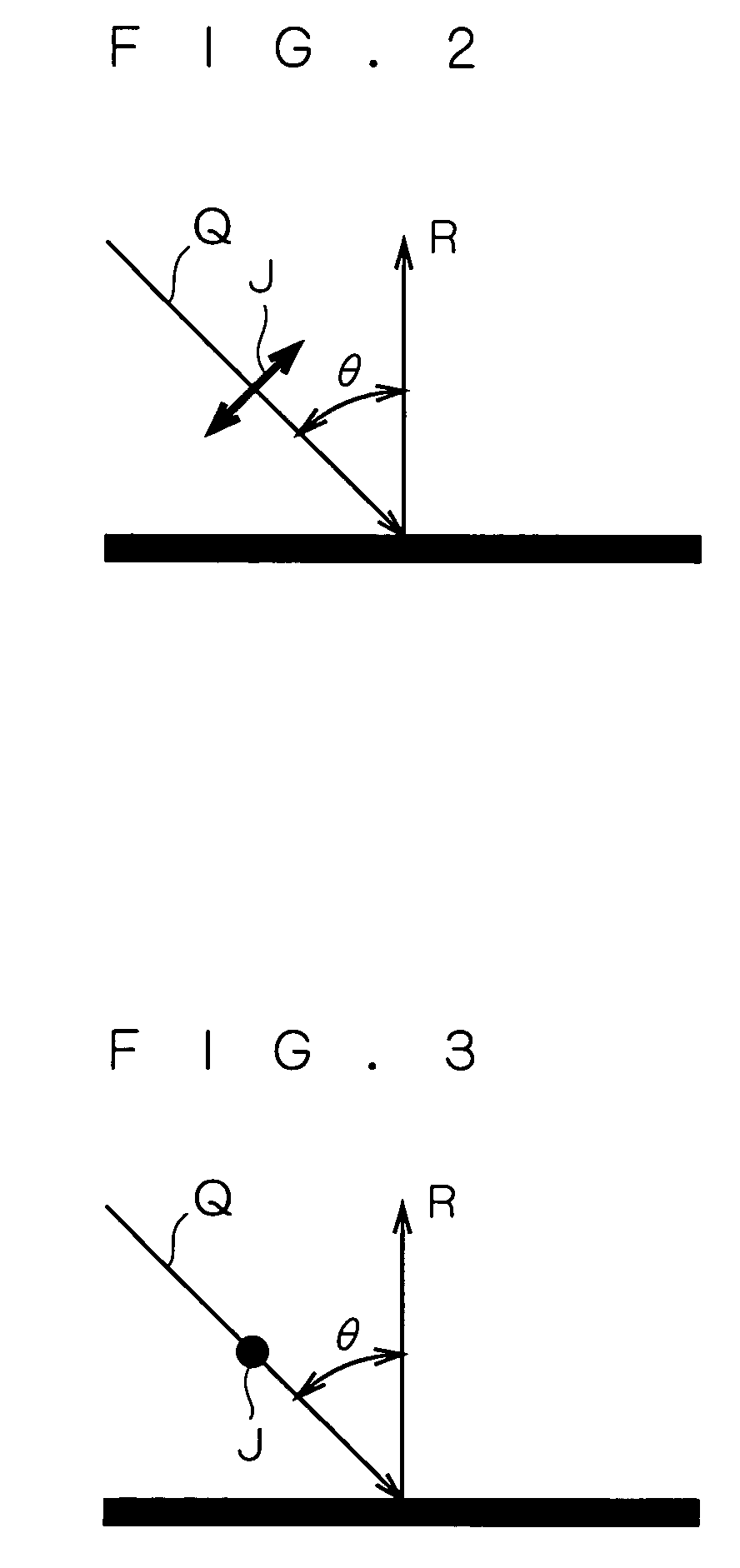Polarizer, projection lens system, exposure apparatus and exposing method
a projection lens and polarizer technology, applied in the field of exposure, can solve the problems of inability to improve the degree of resolution, the degradation of the imaging characteristics of the photoresist, and the neglect of polarization to become evident, so as to improve the contrast of optical images and improve the resolution characteristics
- Summary
- Abstract
- Description
- Claims
- Application Information
AI Technical Summary
Benefits of technology
Problems solved by technology
Method used
Image
Examples
first preferred embodiment
[0027]FIG. 1 shows an optical system of a projection exposure apparatus to which the present invention is applicable. Illumination light emanated from a lamp house 11 is reflected off a mirror 12, and passes through a fly eye lens 13, an aperture member 14, a relay lens 15A and a blind 16 in this order, and is further reflected off a mirror 17.
[0028]The fly eye lens 13 is divided into a plurality of lens regions 13a, and light emitted from the respective lens regions 13a pass through an opening of the aperture member 14. On the surface of a photomask 18, the light rays from the individual lens regions 13a are laid on top of one another, which means the lens regions 13a contribute to uniform illumination.
[0029]The illumination light reflected off the mirror 17 reaches the photomask 18 with a circuit pattern formed thereon, through a condenser lens 15B. The light which has passed through the photomask 18 (including diffracted light) passes through a projection lens system 19 to reach ...
second preferred embodiment
[0041]In the present embodiment, another mode of the polarizer 21 will be described, by way of example. FIG. 9 illustrates a pattern on the photomask 18. In the pattern, a plurality of light shielding portions 18a extending in one direction are arranged at intervals in parallel to one another. Light incident on the photomask 18 passes through the intervals, while the light shielding portions 18a shield the incident light.
[0042]FIG. 10 schematically shows the behavior of diffracted light generated by the photomask 18, seen in a direction parallel to that in which the light shielding portions 18a extend.
[0043]Incident light Li, after passing through the intervals between the light shielding portions 18a, is split into zero-order diffracted light L0 and first-order diffracted light L1 (or higher-order diffracted light). Since the light shielding portions 18a extend in one direction, the diffracted light has the direction of polarization having a component parallel to that of the extend...
third preferred embodiment
[0047]FIG. 12 schematically shows the directions of amplitude J1 and J2 of light passing through the polarizer 21 according to the present embodiment. The polarizer 21 is equally divided in to four regions S1 to S4 centering at a position D. The direction of amplitude J1 of polarized light passing through the regions S1 and S3 facing each other and the direction of amplitude J2 of polarized light passing through the regions S2 and S4 facing each other are perpendicular to each other.
[0048]Therefore, where there exist two pairs of light shielding portions in the pattern on the photomask 18, each pair extending in one direction, and the extending directions of the two pairs cross each other at 90 (=360 / 4) degrees, the same effects as in the second preferred embodiment can be achieved. When disposing the polarizer 21 on the surface of the pupil 22a (FIG. 6), it is preferable that the directions of amplitude J1 and J2 and the extending directions of the two pairs of light shielding port...
PUM
| Property | Measurement | Unit |
|---|---|---|
| angle of incidence | aaaaa | aaaaa |
| angle | aaaaa | aaaaa |
| imaging characteristics | aaaaa | aaaaa |
Abstract
Description
Claims
Application Information
 Login to View More
Login to View More - R&D
- Intellectual Property
- Life Sciences
- Materials
- Tech Scout
- Unparalleled Data Quality
- Higher Quality Content
- 60% Fewer Hallucinations
Browse by: Latest US Patents, China's latest patents, Technical Efficacy Thesaurus, Application Domain, Technology Topic, Popular Technical Reports.
© 2025 PatSnap. All rights reserved.Legal|Privacy policy|Modern Slavery Act Transparency Statement|Sitemap|About US| Contact US: help@patsnap.com



